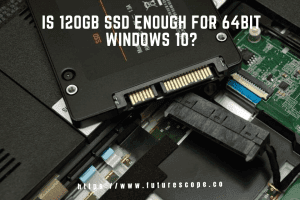Last Updated on July 1, 2021 by Editor Futurescope
The world era we exist today has gone technologically viral and robust. Most of us will agree that the computer is the backbone of every activity in the modern world. Computers have become very magnificent tools that enhance high productivity. Well, there is something special that these computers must just have in order to operate efficiently. We call them Computer Registers.
So, what is a register in computer? From perspective, a computer register is a small unit in a computer that can store any command or instructions, data or address for processor operation. Any computer device needs this crucial unit in order to successfully run its activities as usual.
These Registers are used to execute the various computer tasks. Whenever we command certain instructions to the system, consequently, the Input data will is stored into these registers and in effect the system gives us the output information after processing register computing. Then the Result will also be from the Registers.
Functions of computer registers
The computers register performs these three major specific roles;
1) Fetching: The registers fetch data instructions that are keyed in by the user and locate the potentially stored data from the system.
2) Decoding: This ability is used for interpreting the set of instructions means and process them according to desired results by the user. This function is a very crucial one because some information has to be fully processed to achieve a desired goal or results.
3) Execution: Many computer related tasks are processed by the registers, stored into the computer memory, and given out as per the commands keyed in by the user. Information is processed according to the needs of the user.
Computer Registers Types
There are many different types of registers that are used today. Thy perform certain specific functions in the computer system. The computer Central Processing Units have these items embedded in them in order to manage some executions. Without these items the computer may may be deemed void of performing certain commands and even storing valuable data. These are the most common types of register computer;
The Memory Address Register
This is where the addresses and instructions are held. This is the kind of register that is used to access the stored data and set of instructions from memory during execution stage of instructions.
Memory Buffer Register (MBR)
This type of registers computer holds the contents of data or instruction read from, or written in the CPU memory. The elements of instruction embedded in this kind of register are moved to the Instruction Register, while the elements of data are moved to the main accumulator or I/O register.
Program Counter (PC)
Program Counter registers computers, also referred to as Instruction Pointer Register is normally used to preserve the address of the incoming instruction to be fetched and located for proper execution. When the set of instructions are located, the value of IP is increased. Thus, this register always points or holds the address of next instruction to be located.
Instruction Register (IR)
Once an instruction is fetched and located from main memory of the CPU, it is stored in another register called the Instruction Register. The control unit takes instruction from this register, decodes and executes it by sending sensitive signals to the appropriate component of computer to carry out the assigned task at hand.
Accumulator Register
The accumulator register is located inside the Arithmetic Logic Unit (ALU), It is significantly viable during arithmetic & logical operations of ALU in the CPU of a computer system. It’s purpose is to store data values fetched from main memory in the accumulator for arithmetic or logical operation when and where required. It then holds the prior data to be worked upon, the urgent and immediate results, and the last result of execution. The final result is transferred to main memory through another register popularly known as MBR.
Stack Control Register
A stack refers to a set of memory blocks; the data is stored in and retrieved from these blocks in systematic order. Moreover taken as First In and Last Out (FILO). It is used to intelligently manage the stacks in CPU memory. The size of this register is normally 2 or 4 bytes.
Flag Register
The Flag register is used to indicate occurrence of a certain condition during an operation of the CPU. It is a unique purpose register with size one byte or two bytes. Each bit of the flag register encompasses a flag or alarm, such that the bit value indicates if a specified condition was encountered while executing a certain set of instructions.
In a nutshell, the register in computer are very crucial components in the CPU of a computer. Computers greatly depend on them in order to perform different tasks.









